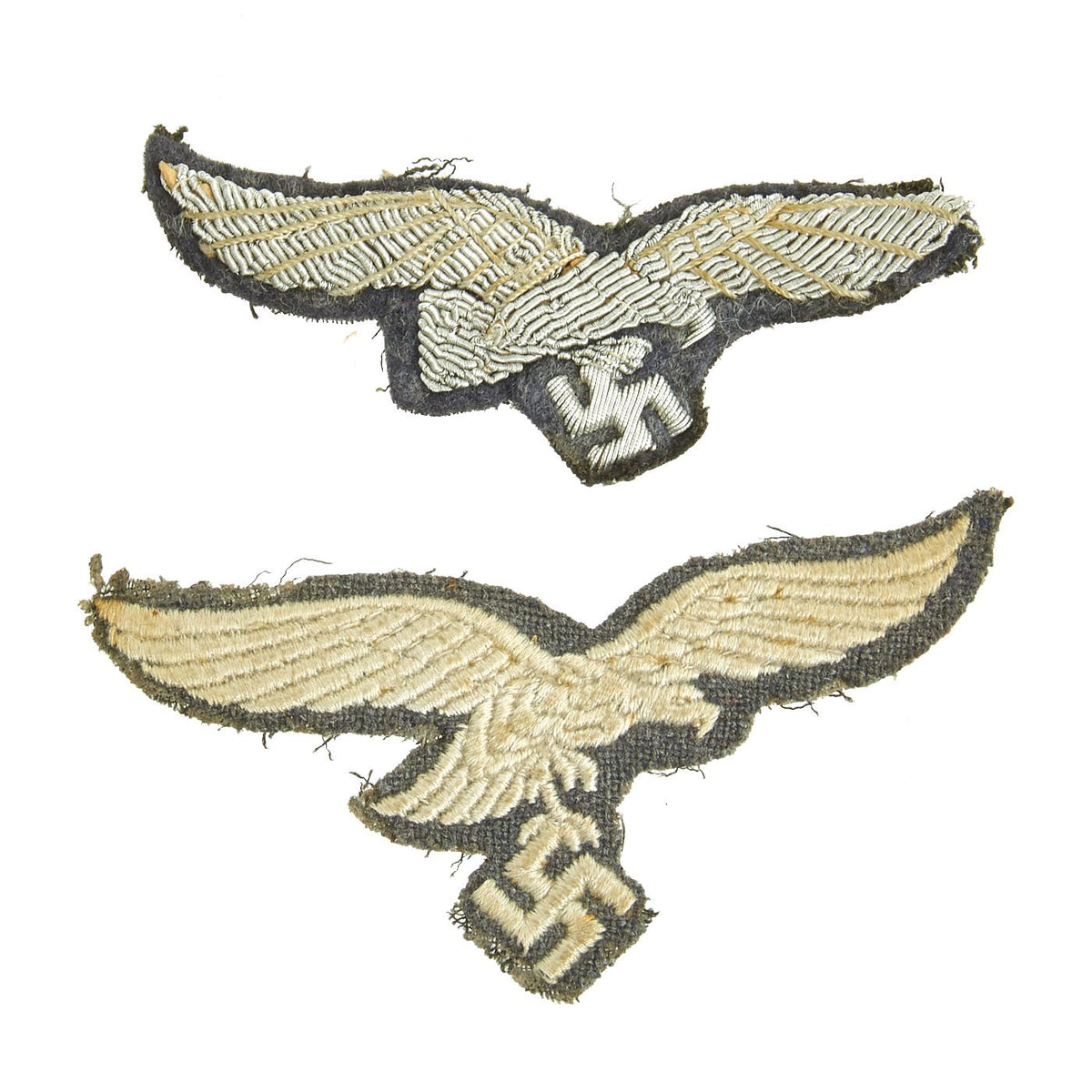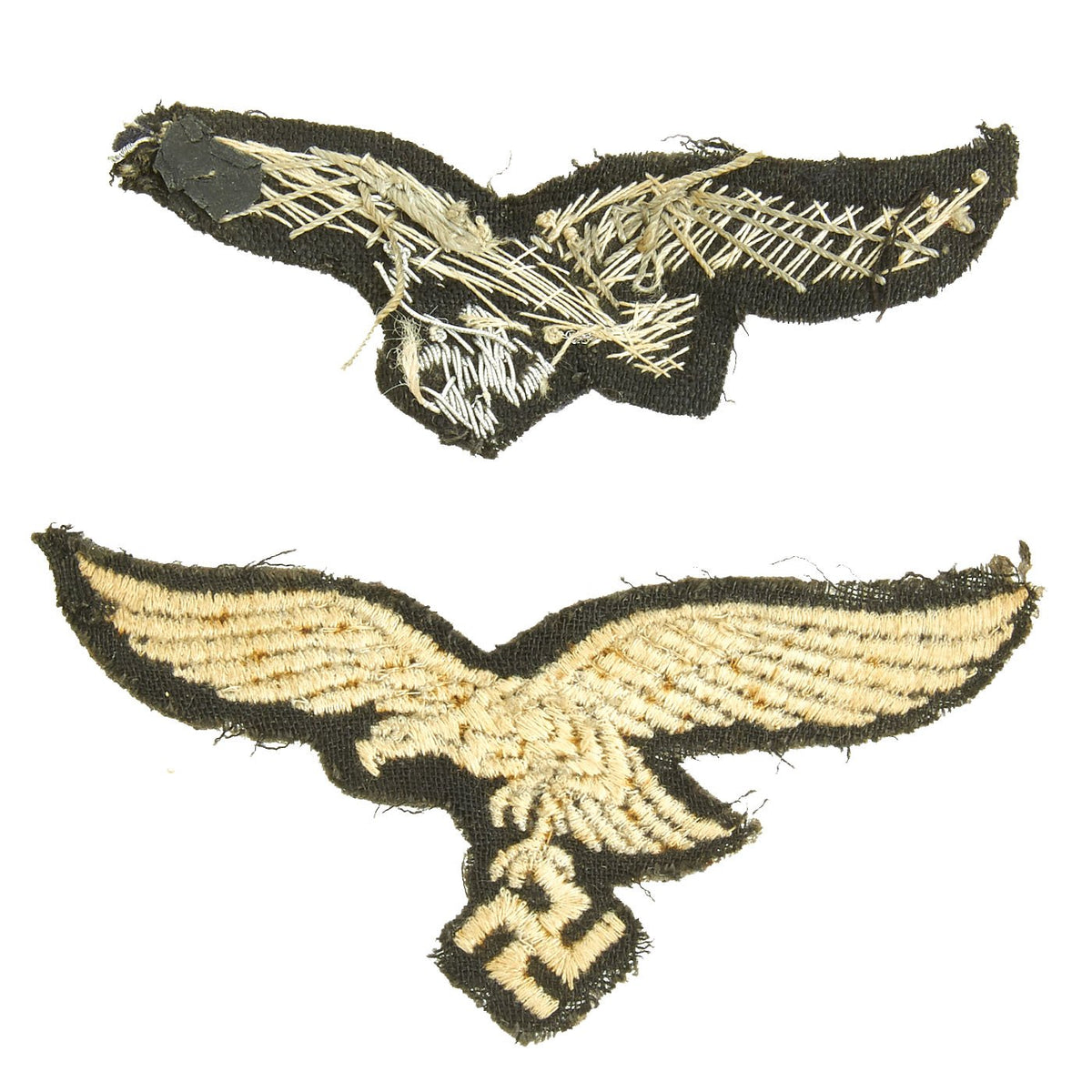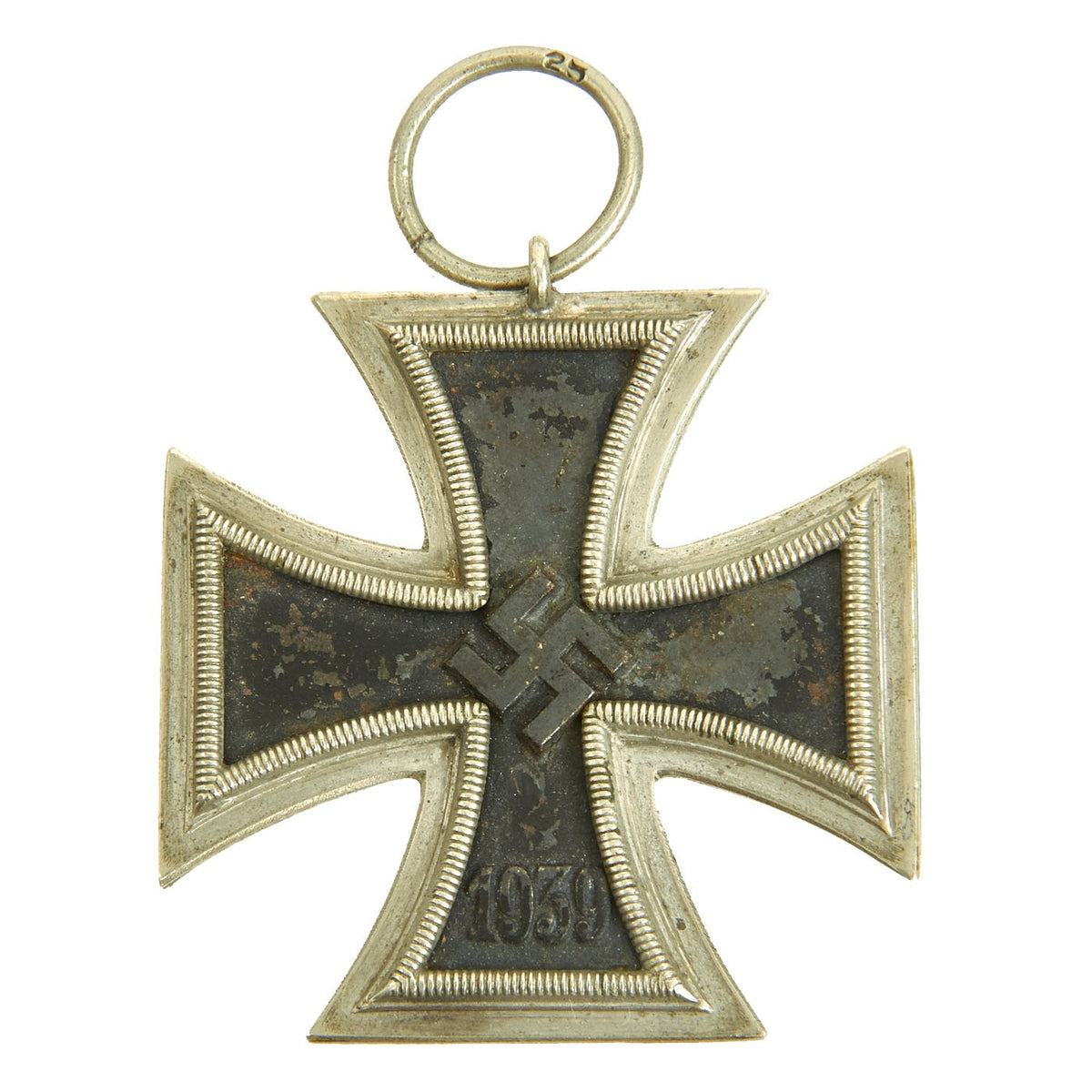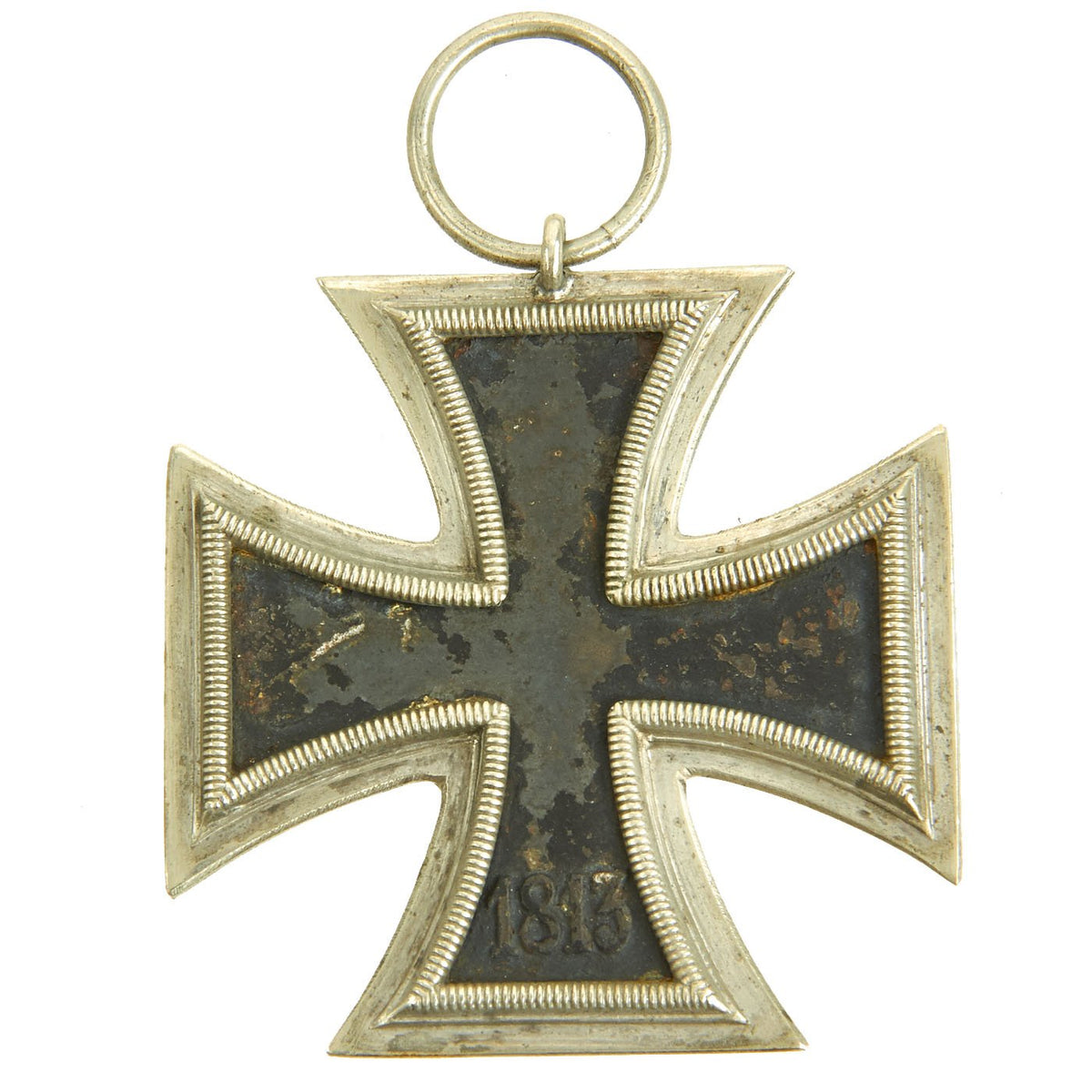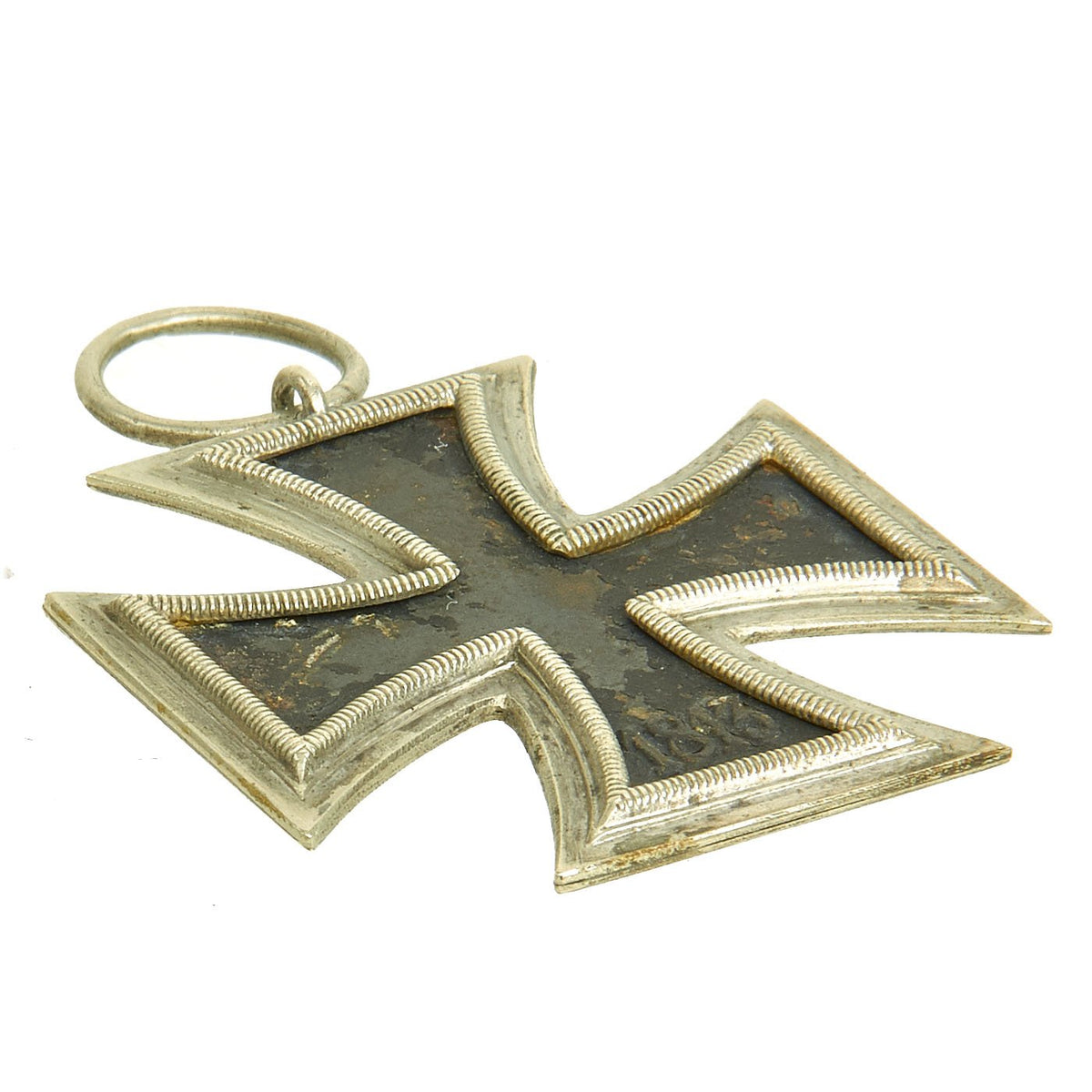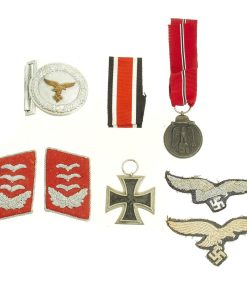Original German WWII Luftwaffe Officer Insignia Grouping with Iron Cross & Eastern Front Medal Original Items
$ 395,00 $ 118,50
Original Items: Only One Set Available. This is a very nice collection of German WWII Insignia, which was brought back from the European theater by a USGI after the war was concluded. It includes some lovely Luftwaffe Insignia, including collar tabs, some breast eagles, and an officer’s belt buckle. There are also two medals: An Iron Cross 2nd Class and an Eastern Front Medal.
This lovely set includes:
– ONE PAIR of Lufwaffe Anti-Aircraft Artillery Hauptmann (Captain) Collar Tabs / Patches. Known as Kragenpatte in German, these were attached to the collars to indicate the rank and branch of the wearer. These are in Tiefrot (Deep Red), the correct Waffenfarbe (Corps Color) for Anti-Aircraft Troops and the Air Force Artillery. The three “wings” above oak leaves indicate the rank.
– One German WWII Iron Cross 2nd Class 1939 (Eisernes Kreuz II. Klasse 1939) with Ribbon. This fine example is in very good condition, and is maker marked 25 on the hanger ring, for Arbeitsgemeinschaft der Graveur-Gold-und Silverschmeide-Innungen in Hanau Germany.
– One German WWII Eastern Front Medal (Medaille Winterschlacht im Osten 1941/42) with attached Ribbon. This example is in good condition, with a vibrant ribbon.
– One German WWII Luftwaffe Officer’s Aluminum Brocade Belt Buckle. This is the standard brocade dress belt buckle for Luftwaffe officers, oval in shape with a Luftwaffe eagle on the front. It is marked on the back with the “barred A” trademark, of F. W. Assmann & Söhne of Lüdenscheid, a large maker of belts, buttons, and other accoutrements.
– One German WWII Luftwaffe Bullion Embroidered Breast Eagle. In excellent condition, fully hand embroidered.
– One German WWII Luftwaffe Embroidered Breast Eagle. In very good condition, fully embroidered with white / silver thread.
A wonderful totally genuine grouping perfect for the WWII Luftwaffe German collector.
There is no more iconic German military award than the Iron Cross. The long history of this order began during the Napoleonic Wars. King Friedrich Wilhelm III of Prussia instituted the “Eisernes Kreuz” (Iron Cross) in March of 1813. The award criteria changed somewhat with time, but generally speaking, Iron Crosses could be awarded for individual acts of bravery, or for leadership achievements on the battlefield. The design was created by a Karl Friedrich Schinkel, his choice of the black cross with silver outline was derived from the heraldic emblem of the Teutonic Knights.
The final reinstitution of the cross came in 1939. For this version, the front of the core for both grades bore a swas and the date 1939. The oak leaves, crown and royal initials were removed from the reverse, with only the date 1813 remaining as a reminder of the legacy of this award. In WWII, hundreds of thousands of Iron Cross First Class awards were bestowed, and four and a half million Iron Cross Second Class awards. Iron Crosses were made by a large number of authorized manufacturers. Some variants of these awards were mass produced in huge numbers. Others were made in very limited quantities.
Please also note the edge seam for authentication, which is not present on reproductions. Iron crosses were commonly constructed from an iron core sandwiched in a surrounding two part silver frame, normally the seam of these two silver parts is visible around the edge of the cross as is seen on this fine example.
The Eastern Front Medal (German: Medaille Winterschlacht im Osten 1941/42) was a World War II German military decoration awarded to both German and Axis personnel. It was awarded to those who served on the German Eastern Front during the winter campaign period of 15 November 1941 to 15 April 1942 It was instituted on 26 May 1942 and was commonly known as the Ostmedaille (East Medal) or Russian Front Medal.
The medal was wryly called the Frozen Meat Medal or the “Order of the Frozen Flesh” (German: Gefrierfleischorden) by Heer, Luftwaffe and Waffen-SS personnel to whom it was awarded.
Qualification
Armed service personnel qualified for the badge after a minimum of 14 days served in active combat; 30 combat sorties for Luftwaffe members; 60 days of continuous service in a combat zone; being wounded or suffering a “frozen limb”, severe enough to warrant the issue of a Wound Badge. The medal could be awarded posthumously.
Fast Shipping with Professional Packaging
Thanks to our longstanding association with UPS FedEx DHL, and other major international carriers, we are able to provide a range of shipping options. Our warehouse staff is expertly trained and will wrap your products according to our exact and precise specifications. Prior to shipping, your goods will be thoroughly examined and securely secured. We ship to thousands clients each day across multiple countries. This shows how we're dedicated to be the largest retailer on the internet. Warehouses and distribution centres can be located throughout Europe as well as the USA.
Note: Orders with more than one item will be assigned a processing date depending on the item.
Before shipping before shipping, we'll conduct a thorough inspection of the items you have ordered. Today, the majority of orders will be delivered within 48 hours. The delivery time will be between 3-7 days.
Returns
The stock is dynamic and we cannot completely manage it because multiple stakeholders are involved, including our factory and warehouse. So the actual stock may alter at any time. It's possible that you may not receive your order once the order has been made.
Our policy is valid for a period of 30 days. If you don't receive the product within 30 days, we are not able to issue a refund or an exchange.
You can only return an item if it is unused and in the same state as the day you received it. You must have the item in its original packaging.
Related products
Uncategorized
Uncategorized
Uncategorized
Uncategorized
Uncategorized
Uncategorized
Uncategorized
Uncategorized
Uncategorized
Australian WWII Owen MK1 Machine Carbine SMG Custom Fabricated Replica with Sling Original Items
Uncategorized
Uncategorized
Angolan Rebel 1970s era 60mm Inert Display Mortar from Angolan Civil War Original Items
Uncategorized
Uncategorized
Armoured Fighting Vehicles of the World: AFVs of World War One (Hardcover Book) New Made Items
Uncategorized
Uncategorized
Uncategorized
Uncategorized
Uncategorized
Uncategorized
Band of Brothers ORIGINAL GERMAN WWII Le. F.H. 18 10.5cm ARTILLERY PIECE Original Items
Uncategorized
Armored Burgonet Helmet & Polearm from Scottish Castle Leith Hall Circa 1700 Original Items

